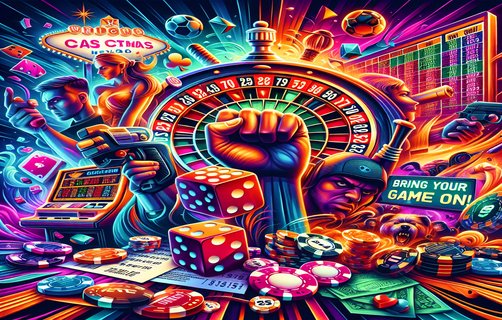The Comprehensive Landscape of Casino Gaming: From Poker Hands to GTO Strategies
With a deep-rooted history and an allure that captivates millions worldwide, the realm of casino gaming is far more than mere chance; it embodies a blend of psychology, strategy, and remarkable visual design. As industry aficionados, we navigate through a spectrum of experiences that includes not only classic poker hands but also the electrifying excitement of blackjack tournaments and the thrilling spins of penny slots. Each of these elements informs a broader narrative about market trends and player preferences.
Starting with the muscle of poker, the game's hands offer a microcosm of strategic depth. Players employ various tactics depending on their hand strength, leveraging knowledge of game theory to optimize their betting behaviors. GTO or Game Theory Optimal play is influential, serving as a cornerstone for competitive players seeking to attain a balanced approach against opponents. This strategy minimizes losses and maximizes gains by weighing possible outcomes heavily against the anticipated actions of others. However, true expertise in poker requires adjustments to GTO principles, leveraging "exploitative" play to counteract specific opponents' tendencies or weaknesses. In an environment where every move counts, understanding both GTO and its adjustments is pivotal.

The vibrant atmosphere of blackjack tournaments further enhances the nexus between luck and skill. Here, players face off against one another and the house, relying on intuition, strategy, and sometimes a fortunate card. The affair is designed not just for high stakes but also for psychological warfare where theft through bluffing is permissible, hinting at the intricate dance that occurs at casino tables. In many respects, blackjack serves as a distillation of casino culture: the thrill combines with calculated moves, drawing in players from all backgrounds, and reflecting broader market sentiments towards chance and hope.
Meanwhile, the realm of penny slots casts a wide net that appeals predominantly to casual gamers—those seeking entertaining diversions without substantial financial commitment. Developed with engaging visual designs, these machines have morphed into high-tech marvels, often incorporating player-centric narratives and gamified features to enhance engagement. This standing is pivotal in drawing newer audiences to casino environments, helping operators support growth in an increasingly competitive landscape.
Overwatching these games is the “game history feature,” a relatively new yet impactful aspect as technology reshapes user experiences. Players now have the ability to track their gaming history, analyze their wins and losses, and adjust their strategies accordingly, making informed decisions while navigating the gaming space. The evolution of this feature as a means of accountability resonates with a demographic increasingly concerned with responsible gaming and risk awareness. Technology is not merely a tool but a driver of consciousness and responsibility.
In tandem with these developments, the scintillating world of fast payout casinos emerges, catering to a progressive narrative where immediacy and convenience take precedence. The rise of these platforms signals a shift in consumer expectations; players no longer want to wait for their winnings. Instead, the desire is for instant gratification, aligning with broader trends witnessed across industries today. Fast payout structures mirror market sentiments that prioritize speed and efficiency, which has become the coin of the digital realm. This movement toward quick returns further amplifies the contest between digital and brick-and-mortar establishments, challenging traditional paradigms of gameplay.

In conclusion, the intricacies of casino gaming interweave many facets—from the strategic gameplay of poker and blackjack to the engaging design of penny slots and the innovations of fast payout casinos. The blend of historical significance, behavioral psychology, and cutting-edge technology sets the stage for continuous evolution, redefining how players perceive risk, engagement, and ultimately, their entertainment choices. As market sentiment evolves, these factors will undoubtedly shape the future of casino gaming, as operators embrace innovation while retaining the classic allure that has kept players returning for generations.
